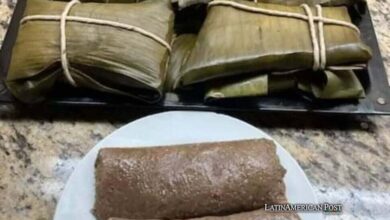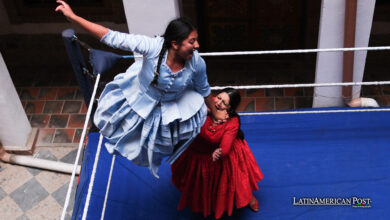Mexico Recovers 30 Archaeological Pieces from Los Angeles, Strengthening Cultural Heritage

Mexico has successfully reclaimed 30 archaeological treasures from Los Angeles, including anthropomorphic figurines, vessels, and ceramic fragments from diverse cultural affiliations. This restitution, led by the Mexican Consulate General in Los Angeles, signifies a crucial step in preserving Mexico’s rich cultural and historical heritage. These artifacts span from the Classic to the Postclassic Mesoamerican period, embodying the legacy of ancient civilizations.
Cultural Repatriation Triumph
In a significant cultural triumph, Mexico has recently welcomed back 30 archaeological artifacts from Los Angeles, United States, marking a pivotal moment in the ongoing quest to preserve the nation’s historical legacy. This collection, encompassing anthropomorphic figurines, vessels, necklace beads (sartales), and ceramic shards, represents a tangible connection to ancestral civilizations, now returned to their rightful home.
The Mexican Secretary of Foreign Affairs, Alicia Bárcena, and Marina Núñez, Undersecretary of Cultural Development at Mexico’s Ministry of Culture, led this momentous restitution. During a work visit to the vibrant city of Los Angeles, they orchestrated the return of these invaluable pieces, previously lost to time and distance. The ceremony, a blend of diplomatic formality and cultural celebration, underscored a profound commitment to cultural repatriation—or as Bárcena poignantly rephrased it, “repatriation,” a term that evokes a return to the motherland, to the very cradle of their origin.
This event is not merely about the physical return of objects but symbolizes a more profound reconciliation with the past. The artifacts, spanning from the Classic period (0-650 AD) to the Postclassic Mesoamerican era (1200-1521 AD), cover a vast spectrum of MMexico’spre-Hispanic civilizations, including those that flourished in the Western territories, the Central Highlands, and the Gulf Coast, with pieces reflecting Maya and Mixtec styles among others.
Meticulous Repatriation Efforts by INAH
The restitution of these artifacts was made possible through the meticulous efforts of the National Institute of Anthropology and History (INAH) under the Secretary of Culture, who authenticated these items as archaeological monuments and, by extension, properties of the Mexican nation. This process underscores the importance of scientific and cultural diligence in the repatriation efforts, ensuring that each piece is recognized for its historical and cultural significance.
The General Consulate of Mexico in Los Angeles has emerged as an active participant in the broader movement to reclaim cultural and archaeological valuables, aligning with President Andrés Manuel López Obrador’s administration’s objectives. Since the onset of López OObrador’sterm in December 2018, the consulate has successfully recovered 117 archaeological items, contributing to the larger tally of over 13,500 cultural pieces repatriated globally under the current government.
This achievement comes amidst a backdrop of international challenges, including recent condemnations by the Mexican government of auctions scheduled in France and Switzerland, where 24 pre-Hispanic artifacts were set to be sold. These incidents highlight the ongoing struggle against the illicit trade and auction of cultural heritage items, a battle that Mexico has waged with determination and strategy, combating auctions in cities like New York, Paris, and Rome and intensifying legal demands for the return of stolen or unlawfully held pieces.
Artifact’s Significance: Beyond Historical and Cultural Value
The repatriation of these 30 pieces from Los Angeles is a testament to Mexico’s unwavering dedication to reclaiming its patrimonial rights. It also showcases the power of diplomatic and strategic alliances with foreign governments, leading to the seizure and cancellation of auctions intended to sell off parts of MMexico’ssoul.
The significance of these artifacts extends beyond their historical and cultural value; they are symbolic of the civilizations that once thrived on Mexican soil. The anthropomorphic figurines offer a glimpse into these ancient peoples’ spiritual and societal norms. At the same time, the vessels and sartales (necklace beads) reflect the everyday life, trade, and artistic expressions of Mesoamerica’s diverse cultures. Though seemingly mundane, Ceramic fragments provide archaeologists and historians with invaluable insights into these societies’ technological advancements and stylistic evolution.
The journey of these artifacts, from their creation by skilled hands millennia ago to their unintended voyage across borders and, finally, their return to Mexican soil, is a narrative of resilience and identity. It underscores the importance of preserving cultural heritage to understand our collective past and shape our future.
Mexico’s proactive stance on cultural repatriation sets a precedent for nations worldwide, emphasizing the intrinsic value of cultural artifacts as connectors to our ancestors and teachers of ancient wisdom. This approach safeguards physical objects and protects the intangible heritage that defines people and their place in the world’s tapestry.
As these pieces find their way back to the “other earth” of their origins, they bring with them stories of ancient times, of civilizations that rose, flourished, and eventually faded but whose legacies continue to captivate and educate. The rematriation of these artifacts to Mexico is a celebration of survival, a declaration that the soul of Mesoamerica endures despite centuries of colonization, conflict, and commodification.
A Celebration of Survival
The collaborative efforts of Mexico’s government, diplomats, and cultural institutions, alongside international partners, illuminate a path forward for cultural preservation. This path is built on mutual respect, legal frameworks, and a shared recognition of heritage as a universal treasure, transcending national boundaries.
Looking ahead, Mexico’s continued pursuit of its lost treasures is a beacon of hope for protecting global cultural heritage. It sends a powerful message that history is not for sale and that the remnants of our shared human journey must be honored, protected, and, when lost, returned to the lands that gave them life.
Also read: Peru Welcomes Back Cultural Treasures from Global Repatriation Effort
In this spirit, the return of the 30 archaeological pieces from Los Angeles to Mexico is a diplomatic victory and a moral triumph. It reaffirms the ties that bind us to our ancestors, the land, and each other, reminding us that in every artifact, there is a story waiting to be told, a lesson waiting to be learned, and a piece of ourselves waiting to be discovered. As Mexico welcomes these pieces home, it reclaims its past and its very identity, setting an example for the world to follow in the stewardship of our collective cultural heritage.





